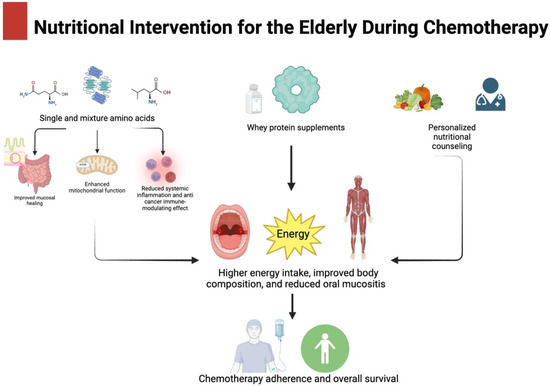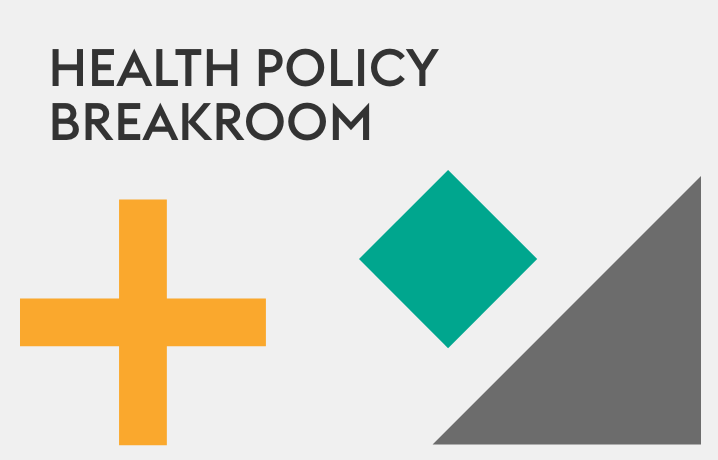Reimagining Workers’ Rights in the Gig Economy: Bridging the Gap Between Independent Contractors and Employees – New York State Bar Association

Report on Reimagining Workers’ Rights in the Gig Economy in Alignment with Sustainable Development Goals
Introduction: The Gig Economy and the Challenge to Sustainable Development
The proliferation of the gig economy, facilitated by digital platforms such as Uber, Lyft, and DoorDash, has fundamentally reconfigured labor markets. This model, characterized by algorithmic control and the classification of workers as independent contractors, presents a significant challenge to the achievement of the United Nations Sustainable Development Goals (SDGs), particularly SDG 8: Decent Work and Economic Growth. While gig workers were deemed “essential” during the COVID-19 pandemic, their legal classification rendered them ineligible for fundamental protections, exposing a structural precarity that undermines global development targets. This report analyzes the failure of existing legal frameworks to address this reality and proposes a new model to ensure that the gig economy contributes positively to sustainable development.
The Failure of Current Labor Classification and its Conflict with SDG 8
Inadequacy of Traditional Legal Tests
The binary legal distinction between “employee” and “independent contractor” is ill-suited for the platform economy, leading to conditions that contravene the principles of decent work outlined in SDG 8. Traditional legal tests are unable to account for the nuances of algorithmic management.
- The Control Test: This test, which focuses on an employer’s right to control the “manner and means” of work, fails to recognize control exerted through algorithms, such as performance ratings, automated deactivation, and dynamic pricing. This digital subordination creates dependency without legal responsibility, hindering progress on Target 8.8 (protect labour rights and promote safe and secure working environments).
- The Economic Realities Test: Designed to assess economic dependency, this test is often misapplied to gig workers who may use multiple platforms. However, this apparent independence masks a structural dependency on platform-controlled pricing, commission structures, and access to work, leading to income volatility and undermining Target 8.5 (full and productive employment and decent work for all).
- The IRS 20-Factor Test: This blended test loses coherence when applied to platform labor, where workers may own their tools and set their hours but remain tethered to a platform’s architecture for their livelihood.
State-Level Fragmentation and the Violation of SDG 10
The absence of a unified federal standard in the United States has created a “jurisdictional lottery,” where worker rights are dictated by geography. This patchwork of state-level regulations exacerbates inequalities, in direct opposition to SDG 10: Reduced Inequalities.
- California’s Assembly Bill 5 (AB5) attempted to secure worker protections by codifying the ABC test, but it was largely nullified for platform companies by Proposition 22.
- This legislative inconsistency allows companies to engage in regulatory arbitrage, concentrating operations in states with weaker protections.
- The result is a dual system that deepens inequality, where workers performing identical tasks receive vastly different levels of protection, undermining social and economic inclusion.
The Human Cost of Misclassification: A Setback for Multiple SDGs
The misclassification of gig workers has tangible, negative consequences that impede progress across several SDGs.
- SDG 1 (No Poverty) and SDG 8 (Decent Work): The lack of minimum wage guarantees, overtime pay, and expense reimbursement pushes many workers toward poverty. Volatile earnings and deceptive practices like “tip baiting” create profound financial instability.
- SDG 3 (Good Health and Well-being): Precarious employment is linked to higher rates of chronic illness, stress, and anxiety. The absence of employer-provided health insurance and paid sick leave places a severe burden on workers’ physical and mental health.
- SDG 16 (Peace, Justice and Strong Institutions): Workers lack access to effective legal recourse for wage disputes or unjust deactivation. The opacity of algorithmic management systems denies workers due process, highlighting the need for stronger, more accountable institutions governing labor.
International Blueprints for Aligning Gig Work with the SDGs
Several countries offer models for regulating the gig economy in a manner that supports the 2030 Agenda for Sustainable Development.
- European Union: Spain’s “Rider Law” reclassifies delivery workers as employees and, crucially, mandates that companies disclose the logic of their algorithms to labor representatives. This promotes transparency and accountability, aligning with SDG 16.
- Canada: The legal category of “dependent contractor” provides a middle ground, granting workers who are economically dependent but operationally independent access to unionization and other protections. This nuanced approach helps achieve the goals of SDG 8 without eliminating flexibility.
- Australia: Direct negotiations between unions and platforms like Airtasker have established minimum pay and safety standards. This demonstrates the potential of SDG 17 (Partnerships for the Goals), where multi-stakeholder collaboration can fill regulatory gaps.
A Proposed Federal Framework for Sustainable and Inclusive Gig Work
To address these challenges systematically, this report proposes the adoption of a federal Fair Tiered Classification Framework (FTCF). This model moves beyond the outdated binary system to better reflect the economic realities of modern labor and advance the SDGs.
The Three Tiers of the FTCF
- Traditional Employees: Workers subject to direct managerial control, who would receive the full suite of existing labor protections.
- Dependent Contractors: Workers who are economically tethered to a platform but retain operational autonomy. This category, inspired by the Canadian model, would grant access to core protections such as collective bargaining, minimum earnings floors, and portable benefits, directly supporting SDG 8 and SDG 10.
- Independent Contractors: Genuinely entrepreneurial workers with diversified income streams and the power to negotiate terms. Protections would focus on contract enforcement and anti-discrimination.
Policy Recommendations for Implementation
To operationalize the FTCF and ensure the gig economy contributes to sustainable development, the following policies are recommended:
- Establish a System of Portable Benefits: Health insurance, retirement savings, and paid leave should be tied to the worker, not a specific employer. This ensures a social safety net that supports worker mobility and well-being (SDG 1, SDG 3).
- Strengthen Enforcement and Penalties: The Department of Labor and IRS must have the authority and resources to audit platforms and impose significant penalties for misclassification, creating effective and accountable institutions (SDG 16).
- Guarantee Collective Bargaining Rights: Adapt labor law to allow for sectoral or platform-wide bargaining, empowering workers to negotiate fair terms regarding pay, safety, and algorithmic management (SDG 8).
Conclusion: Aligning Labor Law with the 2030 Agenda
The current legal framework governing the gig economy is a barrier to achieving the Sustainable Development Goals. By maintaining a classification system that fosters precarity, inequality, and poor health outcomes, it undermines the global commitment to decent work and inclusive growth. Adopting a multi-tiered federal framework like the FTCF, complemented by portable benefits and robust enforcement, is essential. Such reform would align U.S. labor law with the realities of the 21st-century economy and ensure that technological innovation promotes, rather than hinders, a just and sustainable future for all.
Analysis of Sustainable Development Goals in the Article
1. Which SDGs are addressed or connected to the issues highlighted in the article?
The article on workers’ rights in the gig economy directly addresses and connects to several Sustainable Development Goals (SDGs). The central theme of ensuring fair labor conditions, social protections, and legal rights for a vulnerable group of workers aligns with the core principles of the 2030 Agenda. The following SDGs are most relevant:
- SDG 8: Decent Work and Economic Growth: This is the most prominent SDG in the article. The entire discussion revolves around the lack of “decent work” for gig economy workers, focusing on issues like precarious employment, unfair wages, lack of labor rights, and unsafe working conditions. The article critiques a model of economic growth that relies on worker misclassification and vulnerability.
- SDG 1: No Poverty: The article connects the legal status of gig workers to their economic vulnerability. By being denied access to minimum wage, unemployment benefits, and stable income, these workers are at a higher risk of poverty. The proposed social protection measures, like portable benefits, are directly aimed at creating a safety net, which is a key aspect of SDG 1.
- SDG 3: Good Health and Well-being: The article explicitly links precarious employment with negative health outcomes. It mentions that gig workers often lack health insurance and that the stress and anxiety associated with job insecurity lead to chronic illness. This directly relates to ensuring healthy lives and promoting well-being for all.
- SDG 10: Reduced Inequalities: The article highlights the systemic inequality created by the two-tiered system of “employees” and “independent contractors.” This legal classification creates a disadvantaged group of workers who are denied rights and protections available to others. The “jurisdictional lottery,” where rights depend on geography, is a clear example of inequality that the article seeks to address through uniform federal standards.
- SDG 16: Peace, Justice and Strong Institutions: The article critiques the failure of current legal institutions and frameworks to protect gig workers. It calls for strengthening institutions through new legislation (the Fair Tiered Classification Framework), better enforcement by bodies like the Department of Labor, and ensuring workers have access to justice for issues like wage theft and unfair termination. The call for algorithmic transparency also relates to building accountable and transparent institutions.
2. What specific targets under those SDGs can be identified based on the article’s content?
Based on the issues and solutions discussed, several specific SDG targets can be identified:
-
SDG 8: Decent Work and Economic Growth
- Target 8.5: “By 2030, achieve full and productive employment and decent work for all women and men… and equal pay for work of equal value.” The article directly addresses this by highlighting how gig workers are denied “decent work.” The discussion of “minimum earnings floors,” “guaranteed per-trip minimum payments,” and the fight against “tip baiting” and “volatile” compensation relates to achieving fair and equal pay.
- Target 8.8: “Protect labour rights and promote safe and secure working environments for all workers… and those in precarious employment.” The article is fundamentally about protecting the labor rights of gig workers, who are defined as being in “precarious employment.” It calls for extending rights like “collective bargaining,” protection from “unjust termination,” and ensuring safe conditions through provisions like “occupational accident insurance” and access to “personal protective equipment,” especially highlighted during the COVID-19 pandemic.
-
SDG 1: No Poverty
- Target 1.3: “Implement nationally appropriate social protection systems and measures for all, including floors, and by 2030 achieve substantial coverage of the poor and the vulnerable.” The article points out that gig workers are excluded from social protection systems. The proposed solutions, such as “portable benefits” that include “unemployment benefits, retirement savings, and paid leave,” are direct attempts to implement social protection measures for this vulnerable group.
-
SDG 3: Good Health and Well-being
- Target 3.8: “Achieve universal health coverage, including financial risk protection, access to quality essential health-care services…” The article notes that misclassification denies workers access to “health insurance” and “health care stipends.” The proposal for portable benefits is a mechanism to extend health coverage to these workers.
- Target 3.4: “…promote mental health and well-being.” The article cites research using the “Employment Precarity Index” which shows that precarious workers experience “higher rates of chronic illness, stress, and anxiety,” directly linking labor conditions to mental and physical well-being.
-
SDG 10: Reduced Inequalities
- Target 10.3: “Ensure equal opportunity and reduce inequalities of outcome, including by eliminating discriminatory laws, policies and practices…” The article argues that the current legal classification is a policy that creates inequality. It advocates for new legislation, like a “unified national standard,” to eliminate the “legal limbo” and ensure gig workers have the same opportunity for protection as other workers.
- Target 10.4: “Adopt policies, especially fiscal, wage and social protection policies, and progressively achieve greater equality.” The entire article is a call to adopt new wage and social protection policies (minimum wage guarantees, portable benefits) to reduce the inequality faced by gig workers.
-
SDG 16: Peace, Justice and Strong Institutions
- Target 16.3: “Promote the rule of law at the national and international levels and ensure equal access to justice for all.” The article describes how gig workers lack legal recourse and access to justice for “wage disputes” and other grievances. The proposed “Fair Tiered Classification Framework” is an attempt to strengthen the rule of law in the labor market.
- Target 16.6: “Develop effective, accountable and transparent institutions at all levels.” The critique of “algorithmic control” being “opaque” and the praise for Spain’s “Rider Law,” which requires companies to “disclose the logic of their automated systems,” is a direct call for more accountable and transparent corporate practices.
3. Are there any indicators mentioned or implied in the article that can be used to measure progress towards the identified targets?
Yes, the article mentions or implies several quantitative and qualitative indicators that can be used to measure progress:
-
Indicators for SDG 8
- Existence of minimum wage laws/guarantees for gig workers: The article mentions “minimum earnings floors” and “guaranteed per-trip minimum payments” as policy solutions. The adoption rate of such policies would be a clear indicator.
- Prevalence of collective bargaining agreements: The ability of gig workers to unionize and the number of collective agreements signed (like the one between Unions NSW and Airtasker) would measure progress on labor rights.
- Incidence of precarious work: The article explicitly mentions “Wayne Lewchuk’s Employment Precarity Index” as a “quantitative framework for assessing the consequences” of insecure work. This index could be used as a direct indicator.
-
Indicators for SDG 1 & 3
- Percentage of gig workers covered by social protection: This can be measured by tracking access to “health insurance,” “retirement savings,” “paid sick leave,” and “unemployment benefits.” The implementation of “portable benefits” systems would be a key progress indicator.
- Health outcomes among precarious workers: The article suggests tracking rates of “chronic illness, stress, and anxiety” as indicators of the health impact of job insecurity.
-
Indicators for SDG 10 & 16
- Legal and regulatory frameworks: Progress can be measured by the shift from a “fractured terrain of state-by-state regulation” to a “unified national standard” for worker classification. The number of states or countries adopting a tiered system (like the proposed FTCF) or the ABC test would be an indicator.
- Algorithmic transparency requirements: The adoption of laws requiring companies to disclose the logic of their management algorithms, as seen in Spain’s “Rider Law,” serves as an indicator of institutional accountability.
- Enforcement actions and penalties: The number of audits conducted by the Department of Labor and the imposition of “substantive penalties” for misclassification would indicate the strength of institutional enforcement.
4. Table of SDGs, Targets, and Indicators
| SDGs | Targets | Indicators Identified in the Article |
|---|---|---|
| SDG 8: Decent Work and Economic Growth |
8.5: Achieve full and productive employment and decent work for all.
8.8: Protect labour rights and promote safe and secure working environments for all workers, especially those in precarious employment. |
|
| SDG 1: No Poverty | 1.3: Implement nationally appropriate social protection systems and measures for all. |
|
| SDG 3: Good Health and Well-being |
3.8: Achieve universal health coverage.
3.4: Promote mental health and well-being. |
|
| SDG 10: Reduced Inequalities |
10.3: Ensure equal opportunity and reduce inequalities of outcome by eliminating discriminatory policies.
10.4: Adopt policies, especially wage and social protection policies, to achieve greater equality. |
|
| SDG 16: Peace, Justice and Strong Institutions |
16.3: Promote the rule of law and ensure equal access to justice for all.
16.6: Develop effective, accountable and transparent institutions. |
|
Source: nysba.org

What is Your Reaction?
 Like
0
Like
0
 Dislike
0
Dislike
0
 Love
0
Love
0
 Funny
0
Funny
0
 Angry
0
Angry
0
 Sad
0
Sad
0
 Wow
0
Wow
0











































































